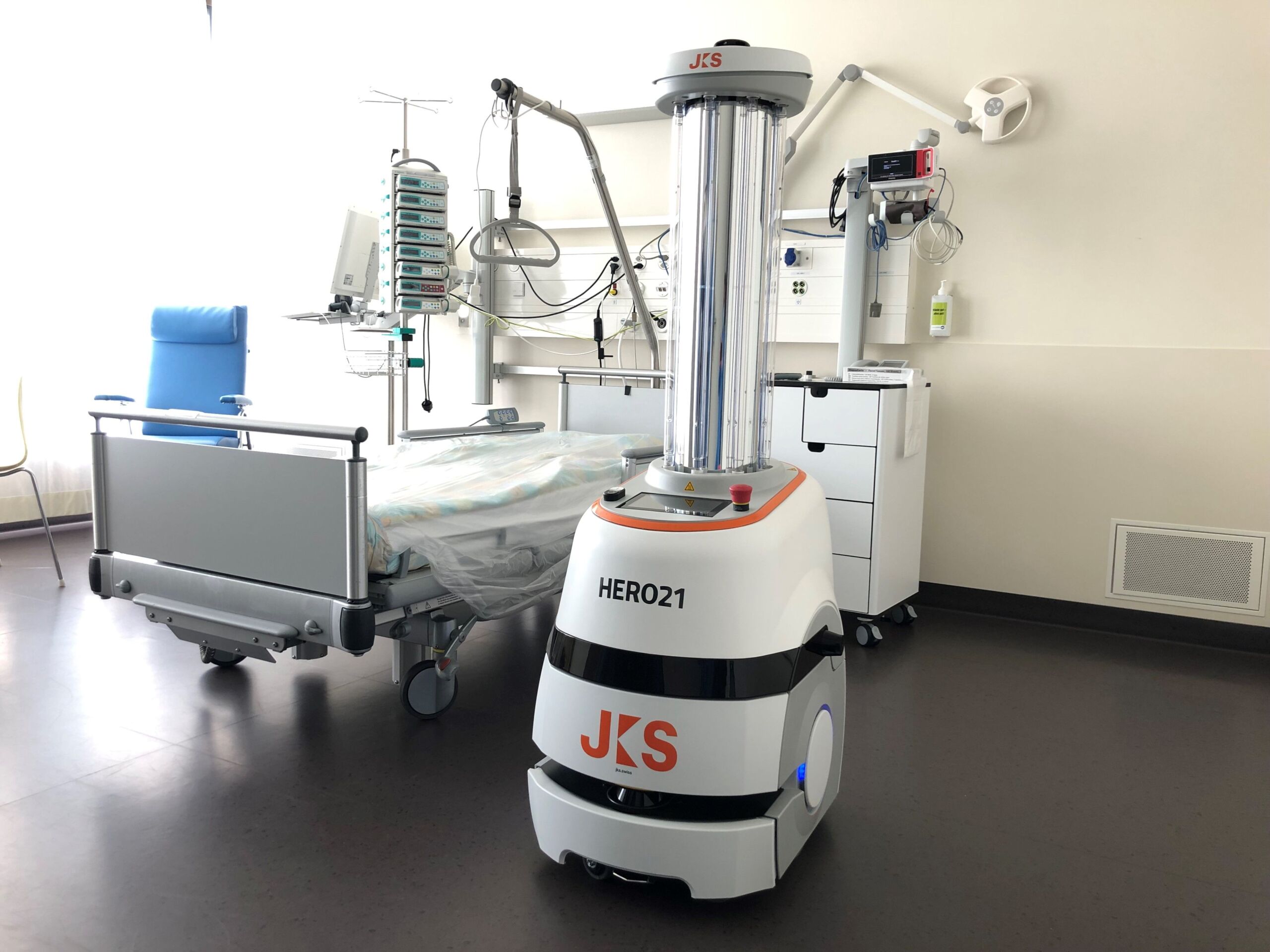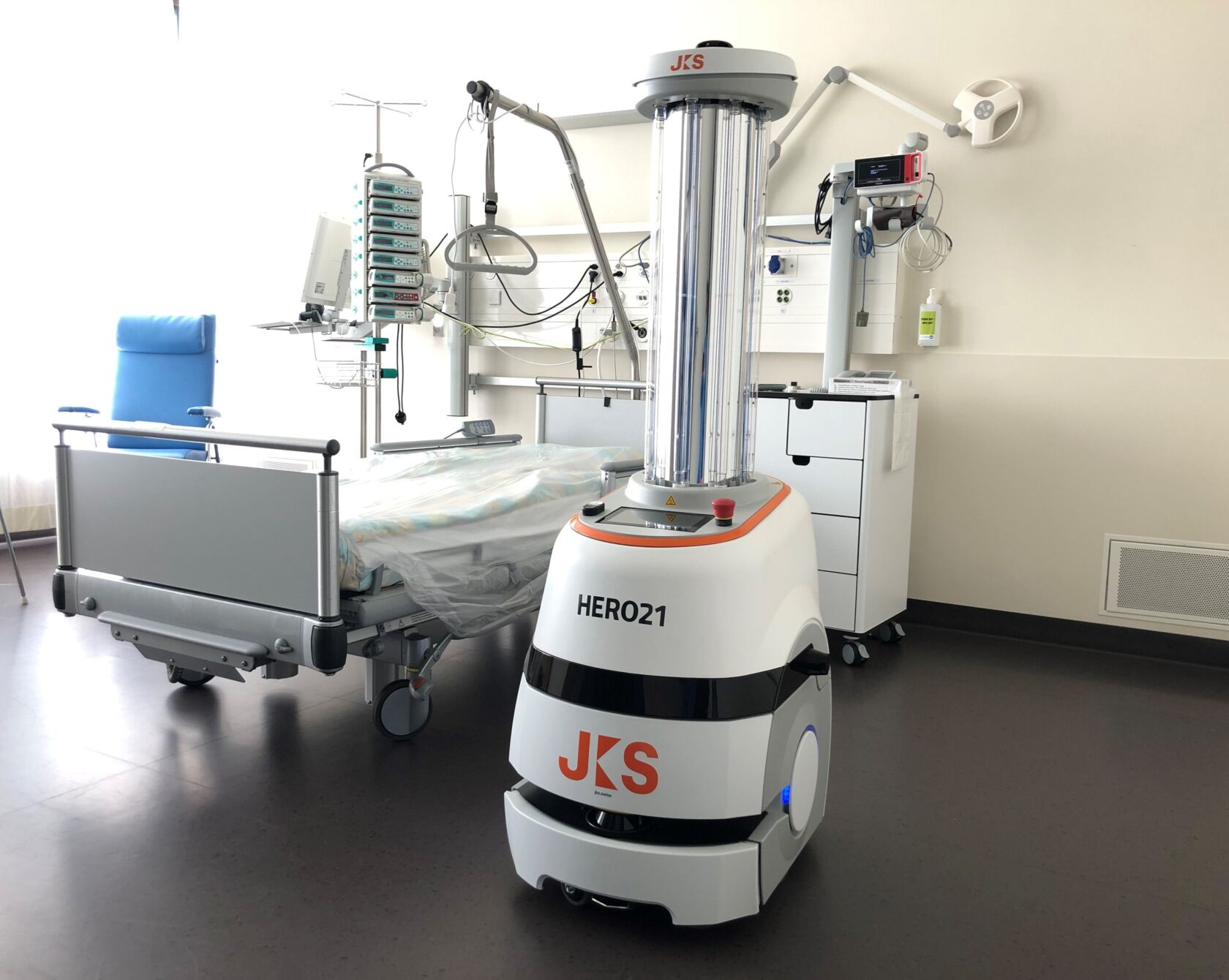To further increase patient safety, an ultraviolet C disinfection robot has recently been deployed at the University Hospital Zurich (USZ). It is the first of its kind in a Swiss hospital and cleans patient rooms with UV-C rays that kill pathogens.
The “Hero21” disinfection robot quickly moves through the hospital corridor. If it encounters an obstacle – for example, employees standing in the corridor – it stops and finds an alternative route after a few moments. The robot is one and a half meters high, 55 cm wide and 70 cm deep. It consists of a rolling base to which various sensors are attached. Thanks to them, the device (www.hero21.ch) can independently orient itself in the room and aim for the targets that the cleaning staff give it. It can also travel in elevators, provided the elevator is equipped with the necessary technology. Once at its destination, Hero21 completes its task: disinfecting patient rooms.
UV disinfection: always a plus
Hero21 does the job with eight UV-C lamps attached to its base. “The effectiveness of UV-C rays in combating bacteria and viruses on surfaces and in indoor air is scientifically undisputed,” explains Aline Wolfensberger, senior physician at the Department of Infectious Diseases and Hospital Epidemiology at USZ. “The cleaning robot is an easy-to-use helper to eliminate pathogens effectively and efficiently,” says Aline Wolfensberger. Basically, the longer the radiation duration and the closer the radiation source is to the cleaning object, the better the disinfection. Manual cleaning by cleaning staff always precedes the use of the robot. There are also places where the robot’s light cannot reach – for example, in closed cabinets or under a bed.
Innovation to strengthen patient safety
“We use the robot for secondary cleaning of patient rooms in which, for example, patients with “hospital germs”, i.e. with pathogens relevant to hospital hygiene, were accommodated,” says Adrian Lottenbach, Quality Officer in Facility Services. After their discharge, he says, thorough disinfection of these rooms is particularly important. “Until now, the cleaning crews made two passes in these rooms. Now we are replacing the second cleaning with UV disinfection,” says Adrian Lottenbach. “The goal of this innovation is to achieve the highest quality cleaning possible and thus further increase patient safety,” he adds. “Increasing efficiency is not the focus of this digitization project.”
Disinfecting a room takes around 15 minutes. Before the robot can be used for cleaning, it has to measure the room once. This also involves programming where in the room it should radiate and for how long. In the bathrooms, for example, a longer radiation period is planned. Cleaning staff give the robot its orders on site via tablet. While the device disinfects autonomously, they can carry out other cleaning activities.
While the robot is disinfecting a room, no people are allowed in the room. The reason: the UV rays are many times stronger than the sun’s rays and thus potentially carcinogenic – they would lead to sunburn and conjunctivitis. To reliably prevent people from coming to harm, sensors are placed on the room door. In addition, thanks to a motion sensor, the robot immediately interrupts its activity if someone enters the patient’s room.

